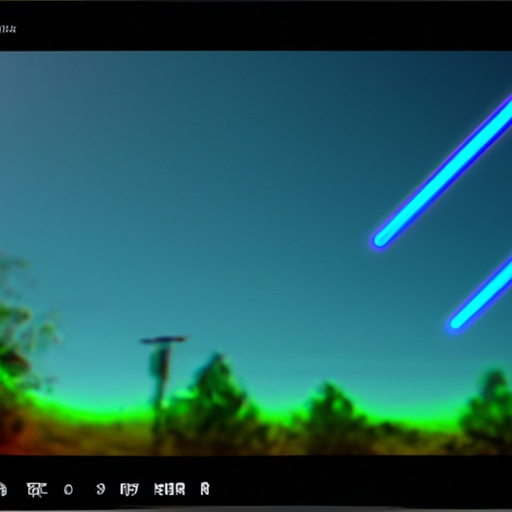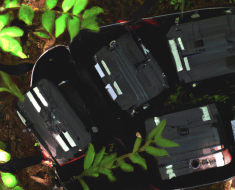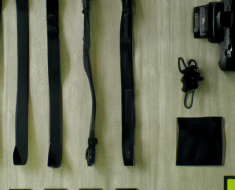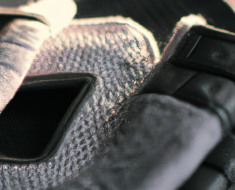“See clearly in any light with Fiber Optic and Tritium Night Sights.”
Benefits of Fiber Optic Night Sights
When it comes to choosing the right night sights for your firearm, there are several options available on the market. Two popular choices are fiber optic and tritium night sights. Both have their own unique benefits and drawbacks, so it’s important to understand the differences between them in order to make an informed decision.
Let’s start by discussing the benefits of fiber optic night sights. Fiber optic sights use small strands of fiber optic material to capture and transmit ambient light, which then illuminates the sight picture. This results in a bright, highly visible sight picture that is easy to acquire in low-light conditions. Fiber optic sights are particularly effective in bright daylight or well-lit environments, where they can provide a clear and crisp sight picture.
One of the main advantages of fiber optic night sights is their brightness. The fiber optic material used in these sights is highly reflective and can gather even small amounts of ambient light, making them ideal for use in a variety of lighting conditions. Whether you’re shooting at dusk or dawn, or even in complete darkness with the assistance of a flashlight, fiber optic sights will help you acquire your target quickly and accurately.
Another benefit of fiber optic night sights is their durability. Unlike tritium night sights, which rely on radioactive decay to produce light, fiber optic sights do not have a limited lifespan. As long as the fiber optic material is intact and properly maintained, these sights will continue to provide a bright and clear sight picture for years to come.
Fiber optic night sights are also adjustable, allowing you to customize your sight picture to suit your shooting style and preferences. Many fiber optic sight systems come with interchangeable rods in different colors and sizes, so you can choose the combination that works best for you. This level of customization can help improve your accuracy and target acquisition speed, giving you a competitive edge on the range or in the field.
In addition to their brightness, durability, and adjustability, fiber optic night sights are also relatively affordable compared to other types of night sights. While they may not be as inexpensive as traditional iron sights, they offer a significant improvement in visibility and accuracy without breaking the bank. If you’re looking for an effective and budget-friendly upgrade for your firearm, fiber optic night sights are definitely worth considering.
In conclusion, fiber optic night sights offer several key benefits that make them an attractive option for shooters of all skill levels. Their brightness, durability, adjustability, and affordability make them a versatile choice for anyone looking to improve their shooting performance in low-light conditions. Whether you’re a casual shooter or a competitive marksman, fiber optic night sights can help you acquire your target quickly and accurately when it matters most.
Advantages of Tritium Night Sights
When it comes to choosing the right night sights for your firearm, there are several factors to consider. One of the most important considerations is whether to go with fiber optic or tritium night sights. In this article, we will take a closer look at the advantages of tritium night sights.
Tritium night sights are a popular choice among gun owners for several reasons. One of the main advantages of tritium night sights is their ability to provide a consistent and reliable sight picture in low-light conditions. Unlike fiber optic sights, which rely on ambient light to function effectively, tritium night sights are self-luminous, meaning they do not require any external light source to glow brightly.
This makes tritium night sights an excellent option for situations where visibility is limited, such as shooting in low-light environments or during nighttime hunting expeditions. The bright glow of tritium night sights makes it easier to acquire and maintain a sight picture, helping you make accurate shots even in challenging lighting conditions.
Another advantage of tritium night sights is their long-lasting performance. Tritium has a half-life of around 12 years, meaning that the glow of tritium night sights will remain bright and visible for many years before needing replacement. This longevity makes tritium night sights a cost-effective option in the long run, as you won’t have to worry about replacing them frequently.
Additionally, tritium night sights are highly durable and resistant to harsh environmental conditions. Whether you’re shooting in rain, snow, or extreme temperatures, tritium night sights will continue to provide a clear and reliable sight picture. This durability ensures that your sights will hold up well under tough conditions, making them a reliable choice for both recreational shooters and law enforcement professionals.
One key advantage of tritium night sights is their versatility. Tritium night sights are available in a wide range of configurations and sizes to fit different firearm models and personal preferences. Whether you prefer a traditional three-dot sight picture or a more specialized design, there is likely a tritium night sight option that meets your needs.
In conclusion, tritium night sights offer several advantages over fiber optic sights, including consistent performance in low-light conditions, long-lasting glow, durability, and versatility. If you’re looking for a reliable and effective sighting solution for your firearm, tritium night sights are definitely worth considering. With their bright glow and dependable performance, tritium night sights can help you shoot with confidence in any lighting situation.
Durability Comparison between Fiber Optic and Tritium Night Sights

When it comes to choosing the right night sights for your firearm, durability is a key factor to consider. Two popular options on the market are fiber optic and tritium night sights. Both offer advantages in low-light shooting situations, but they differ in terms of durability.
Fiber optic sights are known for their bright, easy-to-see colors that are ideal for daytime shooting. However, when it comes to durability, they may not be as robust as tritium sights. Fiber optic sights are made of a delicate material that can break or become damaged if not handled carefully. They are also more susceptible to environmental factors such as extreme temperatures and moisture.
On the other hand, tritium night sights are known for their reliability and long-lasting glow in low-light conditions. Tritium is a radioactive isotope of hydrogen that emits a constant glow without the need for external light sources. This makes tritium sights ideal for nighttime shooting or situations with limited visibility.
In terms of durability, tritium night sights have the upper hand. Tritium is encased in a protective housing that shields it from external elements and impact. This makes tritium sights more resistant to wear and tear compared to fiber optic sights. Additionally, tritium has a half-life of about 12 years, so you can expect your tritium sights to last for a long time before needing replacement.
It’s important to note that both fiber optic and tritium night sights can be damaged if not properly cared for. Regular maintenance and cleaning are essential to ensure the longevity of your night sights. However, if you’re looking for a more durable option that can withstand harsh conditions, tritium night sights may be the better choice.
In conclusion, when comparing fiber optic and tritium night sights in terms of durability, tritium comes out on top. Its protective housing and long-lasting glow make it a reliable option for low-light shooting situations. While fiber optic sights offer bright colors and easy visibility during the day, they may not hold up as well in terms of durability. Ultimately, the choice between fiber optic and tritium night sights will depend on your specific needs and preferences. Consider factors such as shooting conditions, maintenance requirements, and longevity when making your decision.
Accuracy Differences between Fiber Optic and Tritium Night Sights
When it comes to choosing the right sights for your firearm, there are several factors to consider. Two popular options on the market are fiber optic sights and tritium night sights. Each type has its own unique features and benefits, but how do they compare in terms of accuracy?
Fiber optic sights are known for their bright and colorful sight picture, making them ideal for quick target acquisition. The fiber optic material absorbs and amplifies ambient light, creating a bright dot that stands out against the background. This makes it easier to align your sights and place accurate shots on target.
On the other hand, tritium night sights are designed for low-light conditions, providing a glowing sight picture that is visible even in complete darkness. Tritium is a radioactive isotope of hydrogen that emits a faint glow without the need for external light sources. This can be particularly useful in self-defense situations or nighttime shooting.
In terms of accuracy, both fiber optic and tritium night sights have their strengths and weaknesses. Fiber optic sights excel in well-lit environments where the bright sight picture can help you quickly acquire your target. However, they may not be as effective in low-light conditions or at night when ambient light is limited.
Tritium night sights, on the other hand, are specifically designed for low-light situations and provide a glowing sight picture that is easy to see in the dark. This can be beneficial for shooters who need to rely on their sights in nighttime scenarios. However, tritium sights may not be as bright or colorful as fiber optic sights during daylight hours.
When it comes to accuracy, both types of sights can help you place accurate shots on target with practice and proper technique. The key is to choose the sight that best suits your shooting needs and environment. If you primarily shoot in well-lit conditions during the day, fiber optic sights may be the better choice for you. On the other hand, if you frequently shoot in low-light situations or at night, tritium night sights may be more suitable.
Ultimately, the decision between fiber optic and tritium night sights comes down to personal preference and shooting style. Some shooters may prefer the bright and colorful sight picture of fiber optic sights, while others may prioritize the visibility of tritium night sights in low-light conditions.
Regardless of which type of sight you choose, practicing regularly with your firearm is essential for developing accuracy and proficiency. By familiarizing yourself with your chosen sights and honing your shooting skills, you can improve your accuracy and confidence on the range or in the field.
In conclusion, both fiber optic and tritium night sights have their own unique advantages when it comes to accuracy. Whether you prefer the bright sight picture of fiber optic sights or the glowing visibility of tritium night sights, choosing the right sight for your firearm can enhance your shooting experience and help you achieve greater accuracy on target.
Cost Analysis of Fiber Optic vs Tritium Night Sights
When it comes to choosing the right night sights for your firearm, there are several factors to consider. Two popular options on the market are fiber optic and tritium night sights. Both have their own set of advantages and disadvantages, so it’s important to weigh them carefully before making a decision.
One of the key factors to consider when comparing fiber optic and tritium night sights is the cost. Fiber optic sights are generally more affordable than tritium sights, making them a popular choice for budget-conscious shooters. The cost of fiber optic sights can vary depending on the brand and quality, but in general, they are a more cost-effective option.
On the other hand, tritium night sights tend to be more expensive due to the radioactive material used in their construction. Tritium is a rare and expensive element, which is why tritium night sights come with a higher price tag. While tritium sights may be pricier upfront, they offer the advantage of being self-illuminating and do not require any external light source to function.
In terms of long-term costs, tritium night sights may actually be more cost-effective in the long run. Unlike fiber optic sights which rely on ambient light to be visible, tritium sights will glow brightly in low-light conditions for up to 10-15 years before needing to be replaced. This means that while tritium sights may have a higher initial cost, you won’t have to worry about replacing them as frequently as you would with fiber optic sights.
It’s also worth considering the maintenance costs associated with each type of night sight. Fiber optic sights are generally low maintenance and do not require any additional care beyond regular cleaning. However, because they rely on ambient light to function, they may not be as reliable in extremely low-light conditions.
Tritium night sights, on the other hand, require no external light source and will glow brightly in all lighting conditions. However, because tritium has a limited lifespan of around 10-15 years, you will eventually need to replace them once they start to dim. This replacement cost should be factored into your decision when comparing the overall cost of fiber optic vs tritium night sights.
In conclusion, when comparing the cost of fiber optic vs tritium night sights, it’s important to consider both the upfront cost and long-term maintenance expenses. While fiber optic sights may be more affordable initially, tritium sights offer the advantage of self-illumination and long-lasting performance. Ultimately, the choice between fiber optic and tritium night sights will depend on your budget and personal preferences as a shooter.







